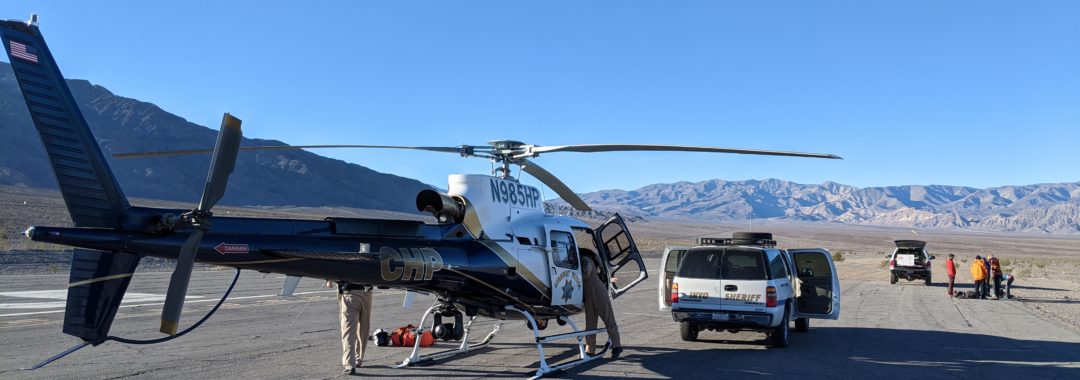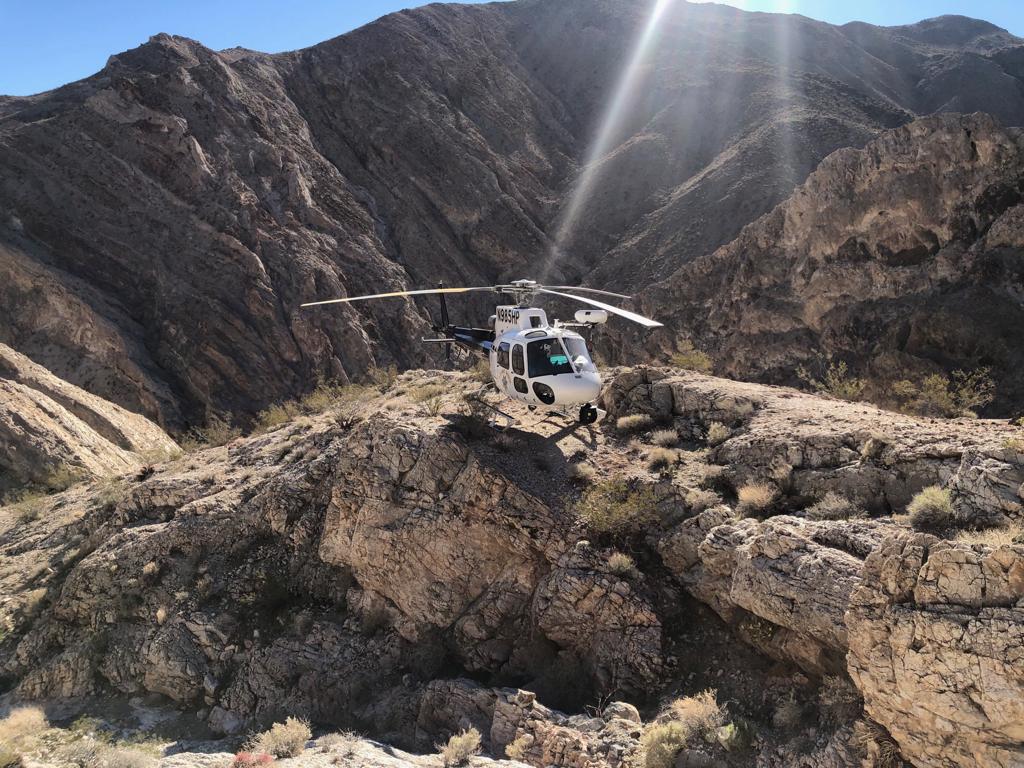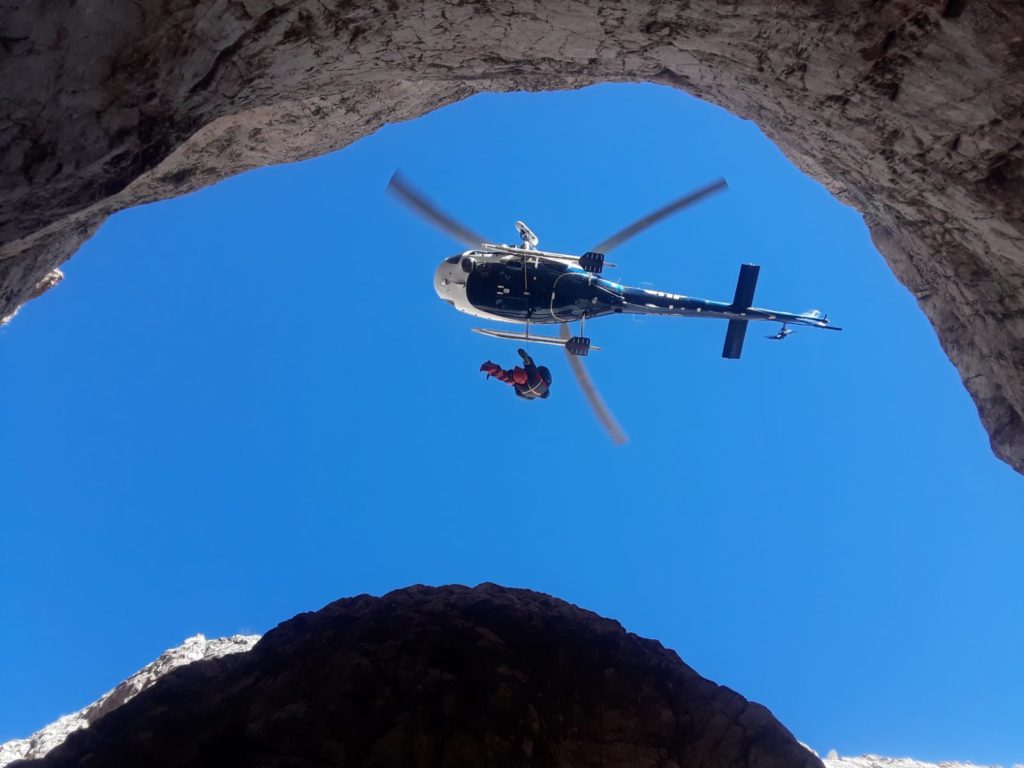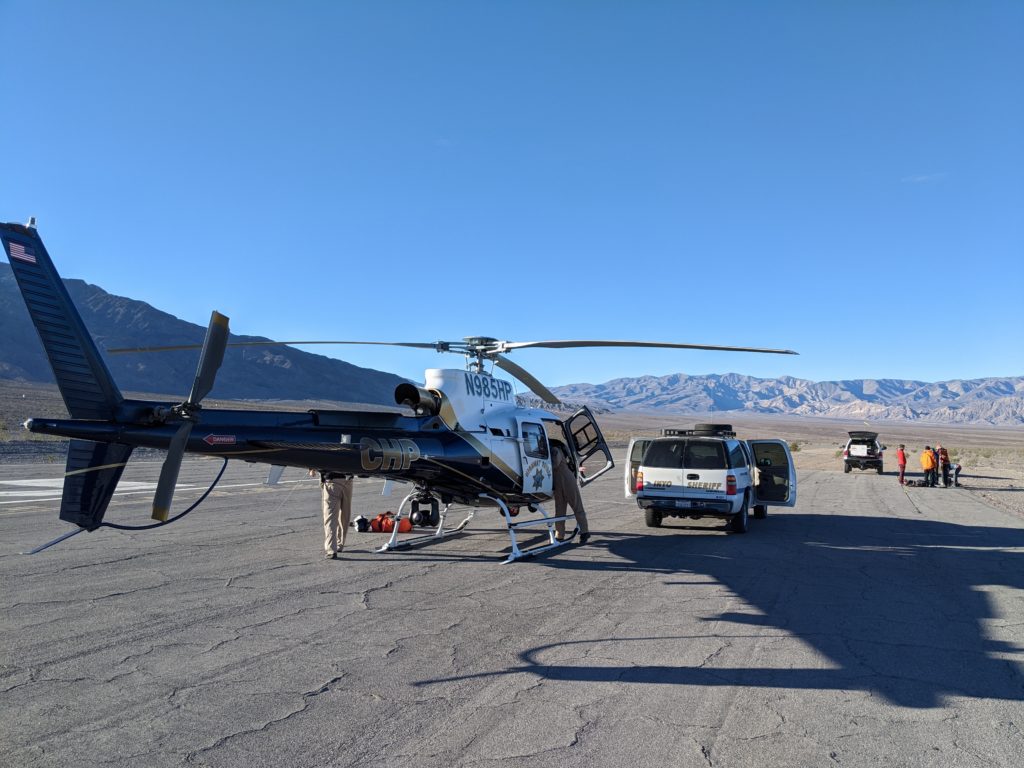ICSO received an SOS activation on February 6, shortly before our general meeting, from a reporting party in Cottonwood Canyon, Death Valley National Park, who had made audible contact with an injured party above them (out of view) in a side canyon. They reported that the injured person was no less than 40 feet above them, out of view. They were unable to make visual contact with the injured party. The injured hiker had deviated from the standard multi-day Cottonwood Canyon loop by exiting upwards away from the main canyon into a side canyon to the west (presumably prior to the narrow section of Cottonwood). The hiker fell while descending a canyoneering route, and he broke the lower part of his tibia in the fall, which ended in a narrow slot canyon underneath a rock overhang. Luckily the injury was not fatal, was not a compound fracture, and did not cause any blood loss.
Inyo SAR members left the hut at 0500 on February 7 and met CHP H-82 and DV NP Rangers at the Stovepipe Wells aerodrome around 0830. They helped strip down the helicopter and prepared one SAR member for initial insertion and a potential hoist. The DV NP Ranger on-scene relayed that the RP had stayed the night, but had been unable to reach the injured subject from below because of the difficulty of the terrain. The plan was to recon the area with an Inyo SAR member onboard and prepared for hoist. After the subject was located from the helicopter, the SAR member was lowered to the patient’s location, where she assessed the patient, splinted the injured leg with the large extremity vacuum splint, and determined that she’d be able to successfully hoist the patient via hotseat. H-82 agreed and executed the hoist successfully. It was a risky hoist because of rotor clearance at the hover altitude. H-82 flew directly to Furnace Creek because fuel was low, and the entire group at Stovepipe Wells departed to meet them there.
The patient was put directly into an ambulance and transferred to the regional hospital for an X-ray, and then transported directly to Las Vegas for surgery.
Takeaway: Don’t climb down something you cannot climb back up – and vice versa. This patient was alone, off of a well-established route, and had no way to communicate with the outside world. He is very lucky that other hikers were able to hear him and call for help.



